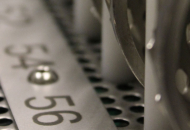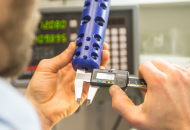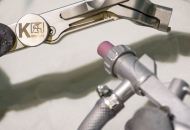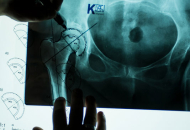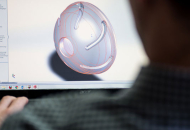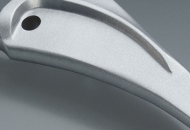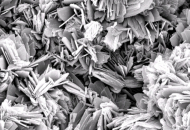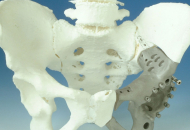Like all manufacturers of implants we use authorized, in the 5832 standard materials.
This standard is binding for us as to any other manufacturer.
In the list beloew, we hollowing therefore no own business names, but the actual standards designations.
CoCrMo (cobalt-cromium-molybdenum-iron alloy)
The CoCrMo cast alloy has good tribiological properties and is well tolerated by the body. It is already proven for years and is characterized by high resistance to corrosion. The excellent wear properties over polyethylene parts could be proven in long-term clinical use.
TiAl6V4/TiAlnb7 (titanium alloy)
With respect to the weight-specific strength titanium alloy still surpass the high-strenght steels. This alloy has been used successfully for 30 years. Furthermore, it has excellent corossion resistance and excellent biocompatibility .
UHMWPE (Ultra High Molecular Weight Polyethylene)
Ultra high molecular weight polyethylene is stiffer and harder than hard-PE and have been used for over 30 years as a material for tribologically stressed prosthetic components. It has very good friction and wear properties. Due to minimal moisture absorption, it is particularly dimensionally stable and tolerance.
X-HDPE (high linked/cross-linked polyethylene)
The “standard polyethylene” is highly crosslinked. The method from irradiation and heat treatment is used. By increasing the brittleness higher abrasion resistance is achived, which allows for a longer life of the bearing. Special features in the sterilizations process to redue the oxidation potential of the material. Here, the polyehtylene is crosslinked by electron beams of high (PE-Xc). By means of this method , a higher abrasion resistance is achived, which allows for a longer life of the bearing.
BONIT® (registered trademark of DOT GmbH, Rostock)
Wherein BONIT® coating is one of an aqueossolution of calcium-phosphate electrodeposited coating.It is pointed out that this product is thus of the known HA-plasma spray layers (hydroxyapatite) is different with respect to its properties and consequent handling. BONIT® is a sensitive, soluble in aqueous solutions, surface coating. The growth behavior becomes demonstrably improved. Touching the coated BONIT® implant section should be avoided as much as possible. In such exceptions may BONIT® – be tocuhed only with smooth coatings and powder-free latex gloves.
The distinction of BONIT ® with a conventional Hydroxilapatitcoating can be done by a simple “water test”: A drop of water (or blood) is absorbed by a BONIT ® coating, while the drop on a HA-coating retracts out of the surface.
Niobium coating
Time and again, our engineers are faced with the question of whether it is niobium titanium nitride is a ceramic.
Explanation: Seen material Scientifically nitrides, carbides and oxides ceramics. For this reason, for example, are also widely used metals but no alumina ceramics ceramics. The technical idea in Anwedungen of thin ceramic to metal heads is a targeted combination of properties of the absolute fracture strength of metal heads with the allergy and wear benefits of ceramic.
In the titanium-niobium-nitride coating is a ceramic wear layer (biocompatible hard material layer) on the metal implants is applied by PVD (physical vapor deposition). This will reduce the attrition in PE (plain) and also gives rise to an optimized allergy protection. Excellent proven biocompatibility and high adhesion of the coating.
Porous coating (PC/cpTi)
Porous coating when it is a titanium powder coating (pure titanium), which is applied by spraying in a vacuum (vacuum plasma spray) on the implants. Thereby a surface enlargement is achieved without thermal conversions of the implant material, and improved fatigue resistance compared to conventional sintering methods. Furthermore, by this method increased purity and adhesion strength is given. The coating allows for an enhanced growth behavior. This ostheokunduktiven properties of pure titanium is owed. A production of implants made of pure titanium is not possible, as pure titanium is mechanically much less stable to titanium alloys. For this reason, the properties of the implant are here achieved by a combination of properties, stability in the base material coupled with titanium alloys, and with optimized growth behavior optimeirtes roughness by a coating.



